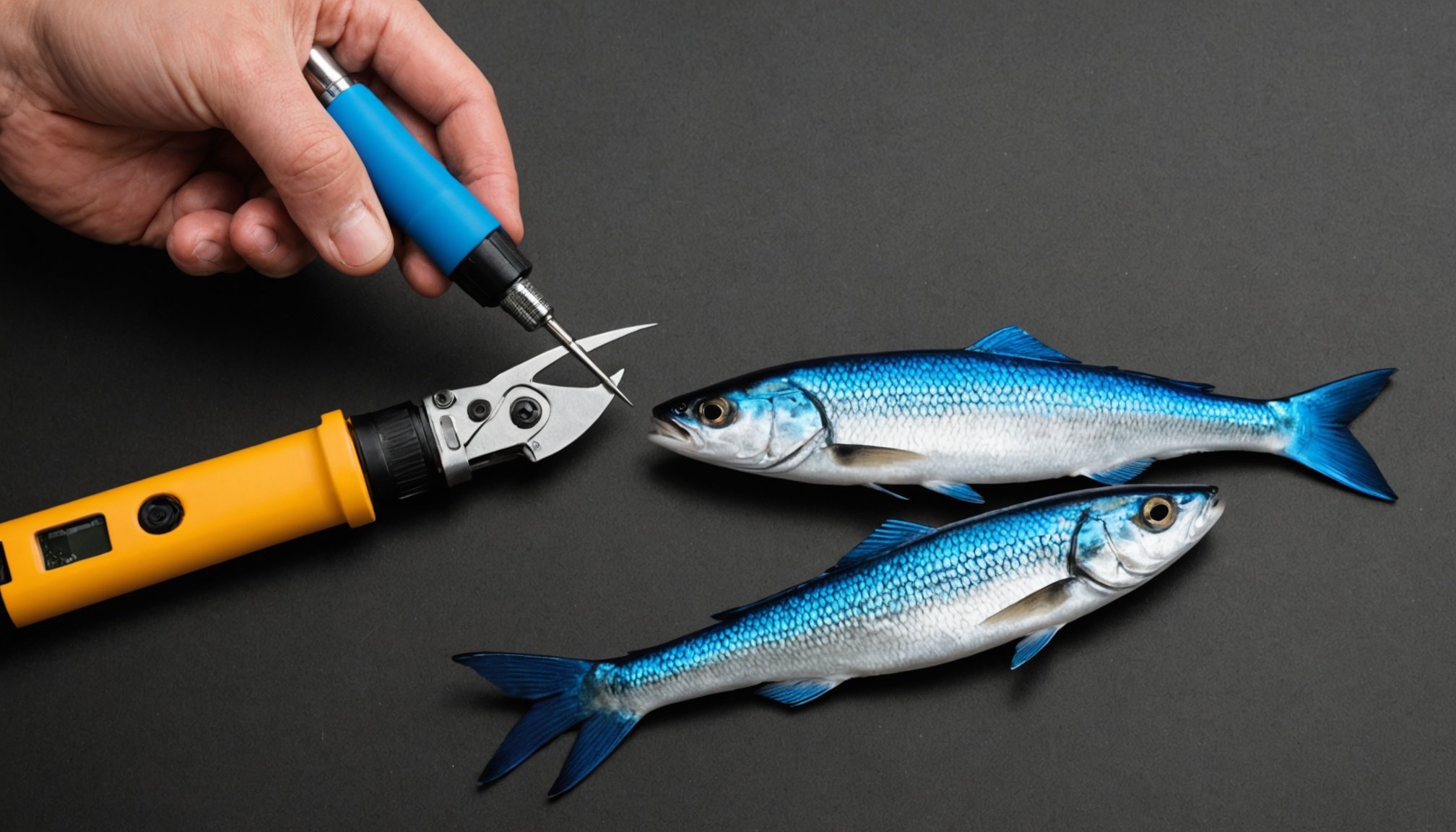Understanding the Importance of Fish Scaling
Fish scaling is a crucial step in fish preparation that significantly impacts both the taste and cleanliness of the dish. Scaling ensures that the naturally tough and sometimes sharp outer layer of scales is removed, making it easier to season and cook the fish. Properly scaled fish allows for enhanced flavour absorption, as spices and marinades can penetrate deeper into the fish’s flesh, leading to a more delicious meal.
Another important aspect of fish scaling is how it contributes to the overall healthiness of the fish. Scales can trap unwanted dirt and bacteria, which could alter the quality of the fish if left intact. By removing these scales, the fish is not only cleaner but less prone to carrying unwanted impurities into your meal, ensuring a healthier dining experience.
In the same genre : Effortlessly chop garlic without the mess: the ultimate guide to choosing your ideal uniform-style chopper
Moreover, scaling simplifies the cleaning process prior to cooking. Once scales are stripped off, the fish is easier and quicker to handle, whether you are pan-frying, grilling, or baking. The lack of scales also results in a more appealing texture and appearance, making the meal more enjoyable from both a visual and taste standpoint. Embracing fish scaling equips you with the skills to create more impressive and tasty dishes.
Overview of Different Types of Fish Scalers
When considering fish scalers, the choice often boils down to manual vs. electric options. Both have their distinct advantages tailored to various needs. Manual fish scalers offer precision and control, especially beneficial for fine-tuning the technique depending on the fish species. They are typically lightweight, providing an excellent tactile experience, making them ideal for delicate fish with thin scales. Manual scalers are also generally more affordable and do not require a power source.
Also to see : The ultimate handbook for choosing a reliable and multifunctional mandoline slicer
Conversely, electric fish scalers deliver convenience and efficiency, particularly useful for scaling larger quantities or bigger fish. They save time and physical effort, suitable for those tackling high-volume scaling tasks or larger-scaled species. However, they come with a higher price tag and necessitate electric access.
Popular scaler designs include L-shaped scalers, known for their ergonomic handling, and peelers, which are versatile across various fish types. When selecting a fish scaler, consider factors such as fish size and species. Larger fish with robust scales may benefit from sturdy and robust tools, whereas smaller fish may only require a softer touch. Thus, the choice of scaler hinges on the specific needs and contexts of the fishing experience.
Key Features to Consider When Choosing a Fish Scaler
Understanding the features of fish scalers is crucial when making a reliable product selection. One of the first aspects to contemplate is the material quality and durability. High-quality materials, such as stainless steel, ensure longevity and resistance to rust, making the scaler more robust against wear and tear from regular use. Durable scalers offer consistency in their performance, leading to better outcomes and satisfaction.
Ergonomics also plays a pivotal role in selecting a fish scaler. The design should provide comfort during use, minimizing hand strain and enhancing grip for efficiency. You’ll likely appreciate a tool that feels natural in your hand, especially during prolonged tasks, which makes ergonomic design a key factor in selecting quality scalers.
Furthermore, consider how easy the scaler is to clean and maintain. Scalers that are dishwasher safe or have detachable parts simplify your post-use routine, ensuring hygiene without much effort. Additionally, efficient maintenance ensures that the tool’s performance remains optimal for a long period.
By focusing on these features—material quality, ergonomic design, and ease of cleaning—you’re more likely to find a fish scaler that meets your needs, ensuring both functionality and satisfaction with the product.
Detailed Reviews of Top Fish Scalers
For those keen to scale fish efficiently, reviewing both manual and electric options can be invaluable.
Product Review: Manual Fish Scaler
Manual fish scalers are known for their precision and control. These tools allow users to carefully remove scales without damaging the fish’s delicate flesh. Reviews often highlight the simplicity and affordability of manual fish scalers. Many anglers prefer them for smaller catches due to their lightweight and easy-to-handle design. Users have praised certain brands for ergonomic handles that reduce strain during use. Consider looking into user testimonials to understand the durability and sharpness of these products over time.
Product Review: Electric Fish Scaler
Electric fish scalers have surged in popularity, offering speed and convenience. Top products in this category often include rechargeable features and water-resistant designs. Customers appreciate the minimal effort required to operate them, making them ideal for larger quantities of fish. Reviews frequently mention the time-saving aspect, though some users have noted that electric versions can be bulkier and less precise for intricate scaling work.
Product Review: Unique Design Scalers
Unique design scalers provide innovative solutions for specific needs. Some feature non-slip grips or enhanced safety measures to prevent injury. User testimonials often commend these specialized tools for addressing particular challenges in fish scaling. When comparing these to others, consider their unique features and the specific contexts they excel in.
Practical Tips for Effective Fish Scaling
Scaling fish can be an art when approached with the right fish scaling techniques. Here’s a step-by-step guide to perfect your fish scaling process while avoiding common pitfalls.
Begin by placing the fish on a stable surface; a wooden or non-slip cutting board works best to maintain stability and control. Softly grip the tail of the fish, keeping it taut. Using a fish scaler or a blunt knife, scrape against the natural direction of the scales – from tail to head. It’s crucial to apply firm but gentle pressure to prevent tearing the skin.
A frequent mistake is applying uneven pressure, resulting in skin cuts. Another common error is not securing the fish properly, which can lead to accidents. Ensuring a firm grip can make a world of difference.
For optimal results, here are a few scaling tips:
- Keep your workspace well-lit and clutter-free to avoid slips.
- Regularly rinse the scales off the fish and your hands to maintain a good grip.
- Use short, even strokes rather than long ones to maintain control.
By following these practical advice, you not only ensure a cleaner scale removal but also make the experience more manageable and safe.
Safety Precautions When Scaling Fish
When it comes to fish scaling safety, employing proper handling techniques is vital to prevent injury. To effectively and safely scale fish, start by securing a firm grip on the fish’s body. This stops the fish from slipping, reducing the chance of accidental cuts or strains. Applying a stable hand reduces mishaps and facilitates a smoother scaling process.
Using recommended safety gear is also crucial for ensuring a safer experience. Protective items such as cut-resistant gloves can shield hands from the sharp scales and potential nicks of a fish scaling tool. Non-slip surfaces and aprons might also be beneficial, offering added protection against slips and stains, ensuring that a pragmatic approach is taken throughout the task.
Post-scaling cleaning and sanitation play a pivotal role in mitigating health risks associated with handling fish. Thoroughly washing hands and cleaning tools with hot soapy water prevents the spread of bacteria. This step is essential in maintaining hygiene and safeguarding against common kitchen contaminants. Moreover, disinfecting surfaces where fish handling occurs further reduces bacterial contamination, ensuring that both the preparation area and the final product remain safe and enjoyable.
Maintaining Your Fish Scaler
Proper scaler maintenance is essential to ensure your tool performs efficiently and lasts a long time. Various types of fish scalers require specific cleaning methods. For handheld scalers, it is recommended to use soapy water and a brush to remove scales and residue. Electric scalers, on the other hand, often have removable parts that can be cleaned separately for thoroughness. Always refer to the manufacturer’s instructions to avoid damaging electrical components.
Extending the life of your scaler involves more than just cleaning. Regularly inspect for any signs of wear and sharpen blades if applicable. By addressing minor issues early, you can prevent larger problems that might affect the tool’s performance. Tool longevity relies on consistent care and attention to detail.
Proper storage plays a pivotal role in maintaining your fish scaler. Ensure scalers are completely dry before storing them to prevent rust. Using a protective case or sheath can provide an added layer of protection, especially for models with sharp edges. Store your tool in a dry, cool place to further inhibit any corrosion or damage. With these practices, your fish scaler will remain effective and reliable for years to come.
Visual Demonstration: Scaling Fish Techniques
Visual demonstrations have revolutionised the way we learn new skills, particularly in activities like fish scaling. Fish scaling videos bridge the gap between theoretical knowledge and practical application, making them an invaluable resource. Such how-to guides visually highlight each step, allowing you to grasp techniques more intuitively than from text alone.
The power of these guides lies in their ability to showcase techniques in real-time. Different methods, ranging from knife usage to specialised scaling tools, are displayed with precision. The step-by-step format ensures that learners can pause, rewind, and replay sections to fully comprehend each action. This method of learning is particularly beneficial as it provides the intricacies involved, such as maintaining proper hand positions or efficiently removing scales without damaging the fish.
Numerous online platforms offer a variety of demonstration resources, catering to novice cooks and seasoned chefs alike. Whether you prefer the quick efficiency of a knife or the precision of a dedicated scaler, these videos will illustrate the nuances and aid in mastering the skills necessary for pristine fish preparation. By integrating these visual experiences, you not only improve your scaling technique but ensure a cleaner and more enjoyable cooking process.











